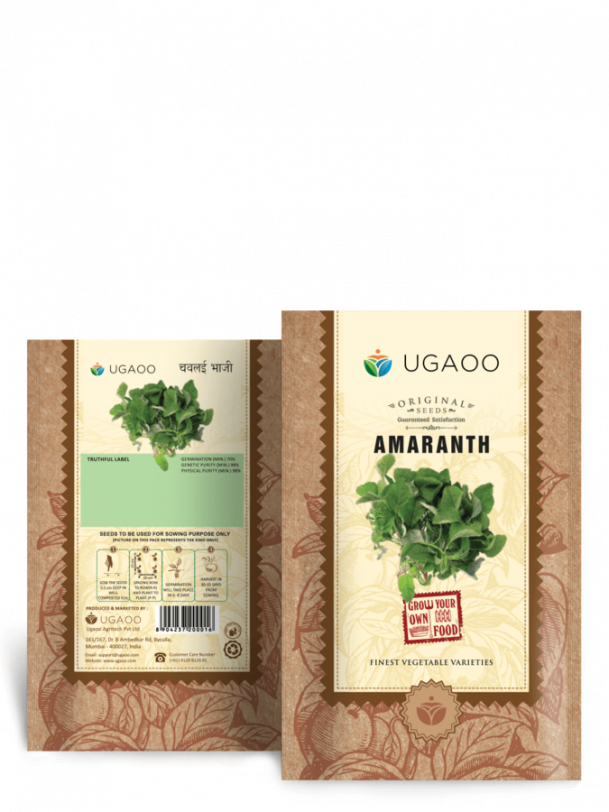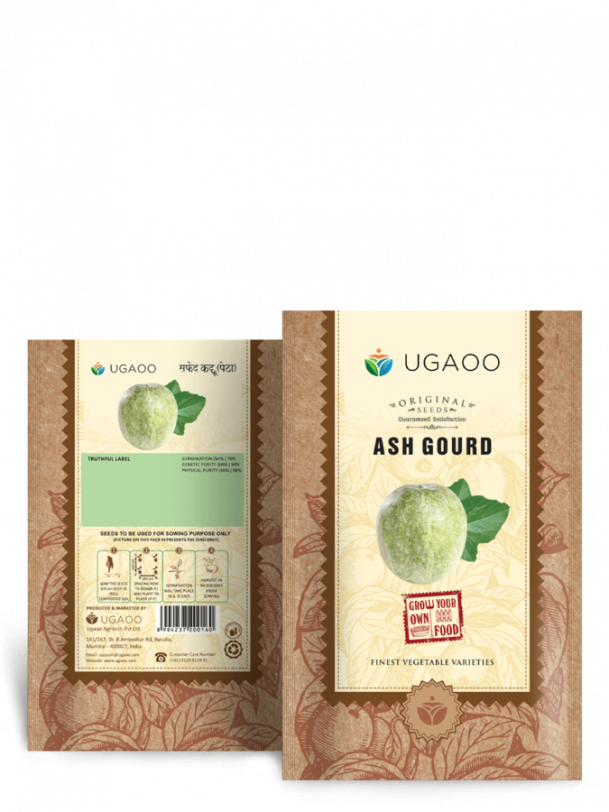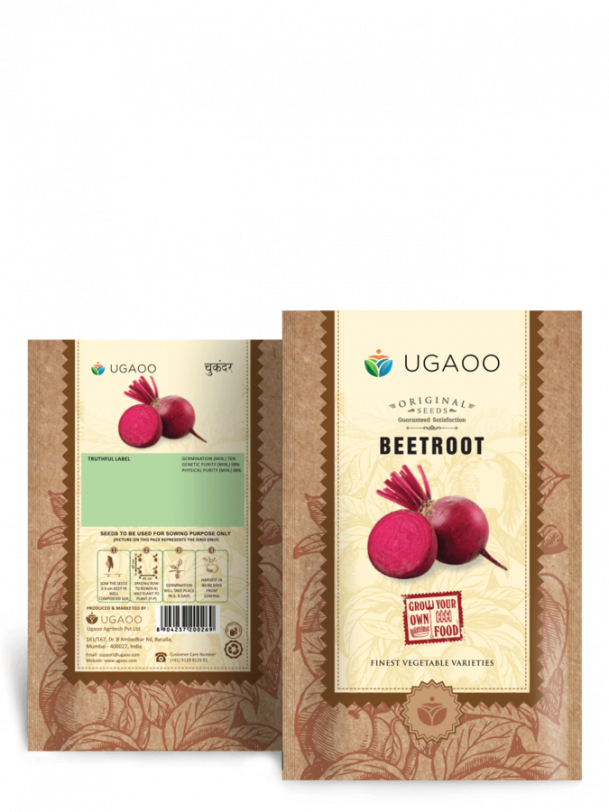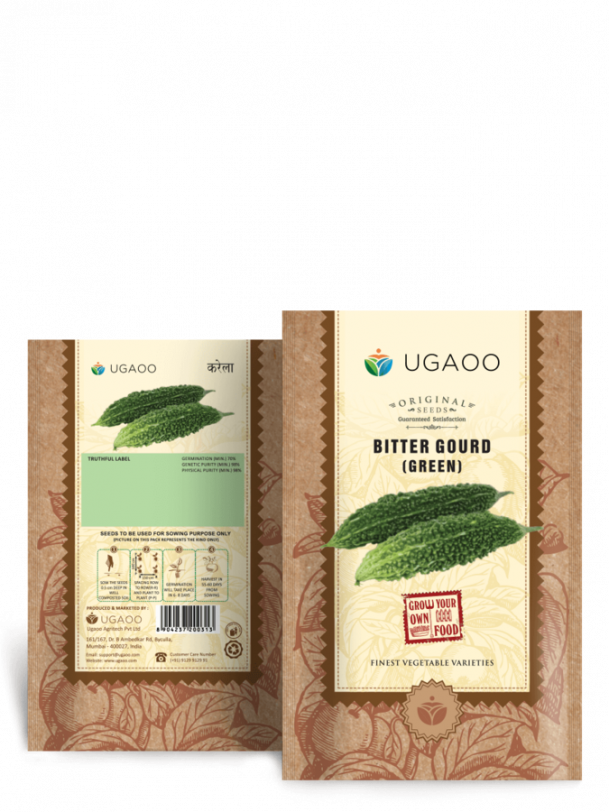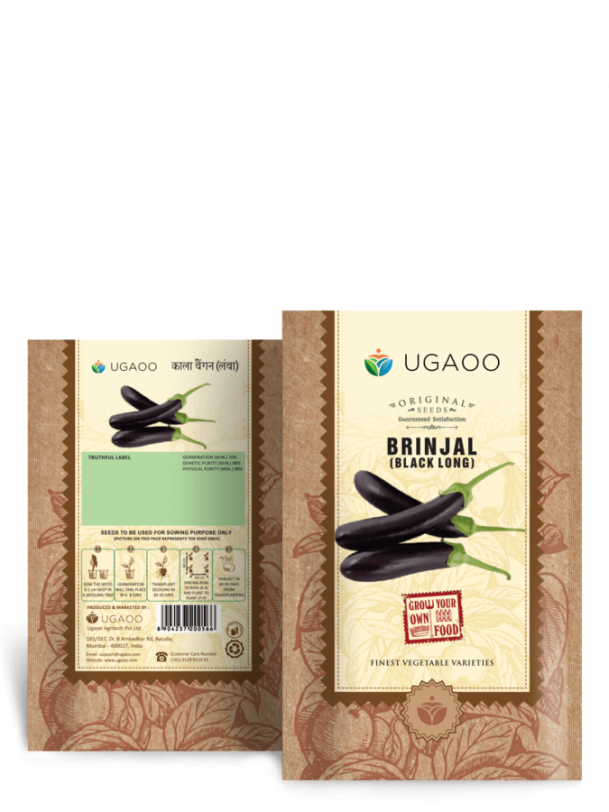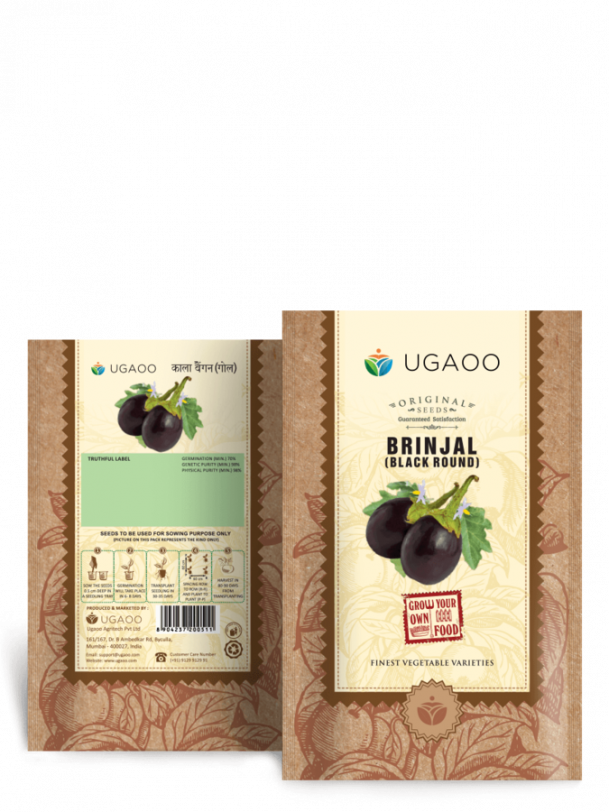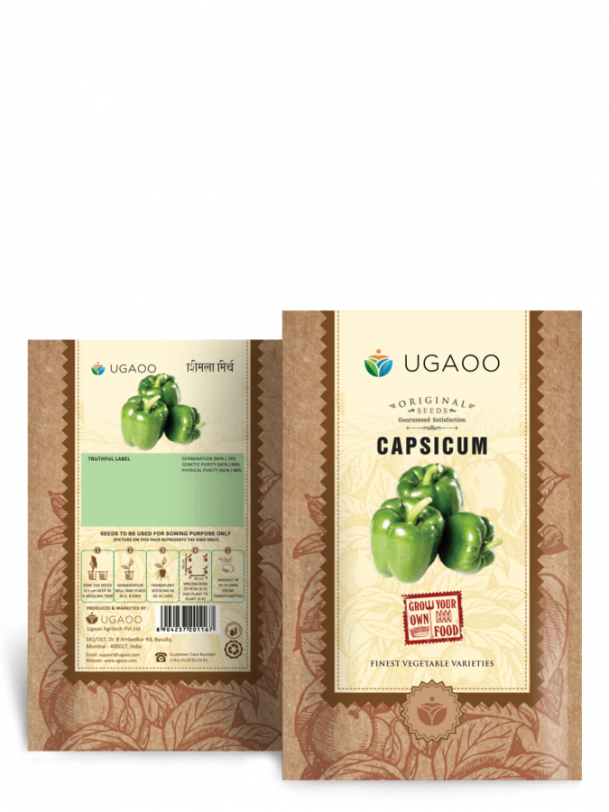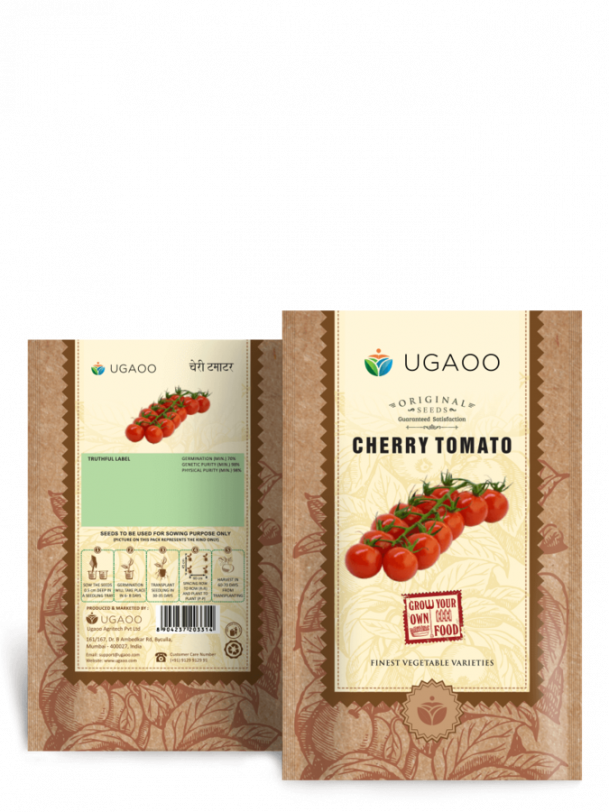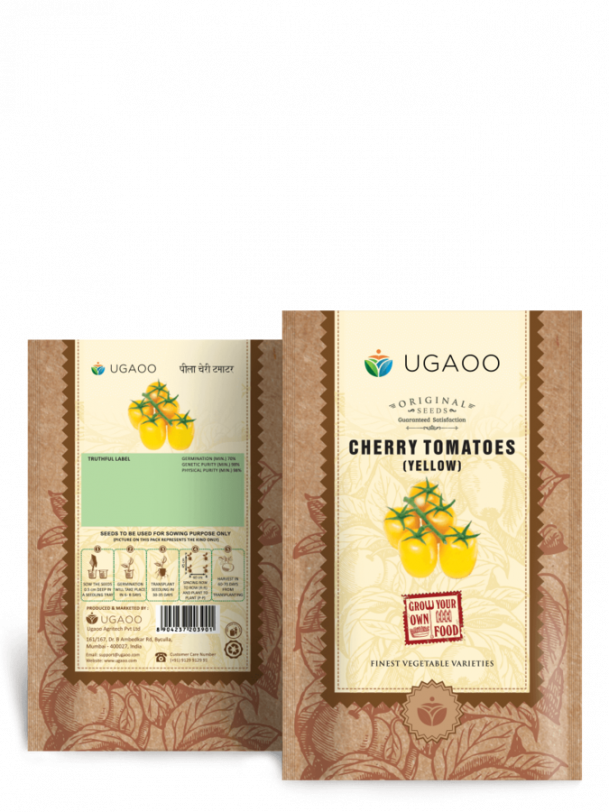- PlantsPlants
- SeedsSeeds
- PlantersPlanters
- Plant CarePlant Care
Learn
LearnSubscription
Subscription- GiftingGifting
Offers
Offers
Vegetable Seeds
Vegetable Garden is a real adventure for gardening enthusiasts. It helps one grow and savour their favourite vegetables right into the garden. At Ugaoo.com, you can buy high-quality vegetable seeds online in India and can easily grow your veggies in your kitchen garden. Scroll down and order your favourite organic vegetable seeds online.

Sort By
Filter
Vegetable Seeds Online in India
Many of us love gardening and growing vegetables at home with little or no harm to the environment is a great way to save money while staying healthy and fit. Unlike many other products, vegetable seeds can be stored easily for longer periods of time without affecting their viability in any manner.
Ugaoo offers the best quality vegetable seeds online that are crucial for high yield and a thriving kitchen garden. Growing your own food helps you in eating right with fresh healthy and organic vegetables. Ugaoo offers a great selection of both exotic vegetable seeds and local vegetable seeds, along with the best quality heirloom seeds. Ugaoo offers non-GMO seeds that are best suited for Indian climate and weather conditions.
With Ugaoo’s vegetable seeds online shopping, you are assured of growing your own organic vegetables without any fertilizer and pesticides. Control your own vegetables’ quality and consume only fresh and healthy food. Organic and fresh vegetables not only improve your health but also lowers your grocery bills and creates family gardening traditions and promotes sustainability. Growing vegetables at pots in home gardens is ana easy task even for a first time gardener. While some vegetables simply require more time, some grow quickly and yield results immediately. Some of the fastest and easiest vegetables to grow in in pots in India are: 1. Tomatoes/cherry tomatoes: Can be grown easily in containers both from seeds and saplings 2. Peppers/chillies: Chillies, capsicum and bell peppers are from the same family and are one of the most widely grown vegetables in home gardens 3. Okra (bhindi): one of the easiest, popular, and high yield options to grow at home 4. Spinach and salad greens: Your regular supply of greens 5. Beans: They are very easy to grow in pots 6. Brinjal/eggplant: High yield and easy to grow 7. Cucumber/radish/carrots: Salad and fibre requirements grown fresh in your homes 8. All herbs: Indian herbs like coriander, mint, or Italian herbs like basil, rosemary, thyme are all easy to grow in pots Growing vegetables from seeds in a home garden is easy even for first time gardeners. The most crucial elements are the soil type, season, light, and water. Follow these general steps to grow your own vegetables from seeds, unless otherwise instructed by the seed provider: 1. Choose vegetables that constitute a major part of your daily food plan and are easy to grow. 2. Select vegetables as per the season, while spinach, coriander, mint, peas can be grown around the year, tomatoes, beans, bell peppers, pak choy do better in the latter half. 3. Buy seeds from a trusted seller. It is the first investment and good quality seeds guarantee successful results while starting vegetable gardening from scratch. 4. Big pots equate to more soil, which equates to more nutrients per plant, thus leading to better and bigger produce. It is also very important to select a nutrient rich soil mix ( with compost, organic manure, and organic fertiliser), because unlike ornamental plants, these plants need to yield fruit and for that they need to grow in a nutrient rich soil. 5. Even for the best quality seeds, not all seeds germinate, so plant more than you need at well-spaced intervals. For example, if you want to grow two tomato plants in pot, plant 4 seeds, if all of them germinate, transplant the other 2 saplings once they are a few inches tall to another pot or gift them to your friends. 6. While sowing the plant seeds, sow them 3-4 times deep the diameter of the seed, unless otherwise specified. Always keeps the soil moist by lightly watering (so as not to disturb the seeds) and spraying the seed bed. Don’t make the soil soggy wet, but moist at all times. 7. Keep the germinating seed in bright indirect sunlight, few hours of direct morning light, or dappled shade to prevent the seedlings from burning in the direct sun. 8. Once the saplings are well established, spray them with an organic pesticide (neem oil) regularly, to keep them healthy and pay attention to their light and water requirements and provide the necessary conditions for better yield and fertilise with organic fertiliser whenever suggested. Do not over fertilize, as that leads to plants dying out. 9. Do not overwater the plants, keep the soil moist at all times. This is where big pots come in handy for first time gardeners, they hold more soil, hence more moisture, so you don’t have to worry about watering too frequently. 10. Pay attention to what the plants are telling you. Always water in the morning before peak sun for maximum benefit. While some vegetables grow all year round, some are seasonal. However, with proper care most of the vegetables can be grown all year by providing the required conditions for plants to grow. The seeds for vegetables take any where between 2 to 3 weeks to germinate and grow into saplings, so the sowing should be done 2-3 weeks before the growing season. The following table is the growing calendar that lists the sowing time and growing period of easy to grow vegetables in pots in home garden in India.
Growing vegetables at home in pots or starting you own vegetable garden form scratch is an easy task even for a first time gardener. One of the biggest distinctions between the soil requirement for vegetable and fruit trees and ornamental plants is the nutrient required. Plants that yield produce need more nutrients for a healthier produce which they get from the soil and the fertilisers that are added to the soil. However a standard potting mix that works for most vegetables is equal parts sterilized garden soil (red soil), rich organic compost, cocopeat, sand, and vermiculite. However, the following points need to be followed when selecting potting mixes: 1. Do not use unclean garden soil, as they might have ants or other small organisms that can eat your germinating seeds. 2. Ensure a nutrient rich soil as it is the foundation of a good yield 3. Ensure that the soil is well draining while also being rich in nutrients 4. Fertilise whenever advised and maintain soil quality 5. One of the safest bets is to go for pre-mixed potting mixes for vegetables provided by trusted sellers. 6. Poor quality soil equates to poor or no yield. Growing vegetables required regular fertilisation both in fields and in homes. Organic fertilisers ensure a healthy chemical free and organic produce excellent for our daily consumption. Some of the best organic fertilisers for growing vegetables at home are 1. Organic manure or compost: it is one of the basic and the easiest ways to give nutrients to soil. It is mixed in the soil at the time of potting. Select a good rich organic fertiliser. 2. Lime: It is important to maintain the pH of the soil to facilitate absorption of nutrients, as certain nutrients absorption stops at values below specific pH. Lime is always used along with other fertilisers. 3. Slow releasing fertilisers for vegetables: These have twice as much phosphorous than nitrogen or potassium and are made specifically for fruiting plants, the slow release quality ensures a regular supply in the growing season. While nitrogen is responsible for foliage (leafy greens), phosphorous aids rooting and flowering, and potassium helps in fruit shape, colour, size, and taste. 4. Liquid fish emulsion, bone meal, organic liquid blends are great organic sources of many primary and secondary nutrients for vegetables. Many vegetables can be grown from the ingredients we find in our kitchen, be it seeds that we use, cuts of vegetables that we so readily throw away, or vegetables that can be used to grow more of their kind. This is a list of vegetables you can grow at home from kitchen scraps: 1. Spring onions: simply place the white head portion of the spring onions in a glass of water (submerge the onion head) and watch the greens grow. While harvesting, cut only the greens and watch it grow back at least 3 to 4 times from the same head. 2. Celery, fennel bulbs, lettuce, bokchoy: simply place the head/bulb/stalk section of the vegetables in water using proper support (toothpicks) and wait for the roots to appear. This will be shortly followed by the greens, harvest the greens till it stops growing back. Keep changing the water once it gets cloudy. 3. Beetroots, turnips, carrots, radishes: place the cut heads of the vegetables in a shallow dish of water and wait for the greens to grow. The greens can be harvested for salads or the cut heads can be transplanted to soil once roots appear for getting new vegetables form the cuttings. 4. Basil, mint, coriander: when you but fresh mint, coriander, or basil: Simply place 3-4 inch long cuttings in water with only a couple of small leaves at the top. Make sure that at least a couple of leaf nodes ( points from where leaves emerge) are submerged in water. Place it in a well-lit spot with indirect light and transplant to a well-draining soil once roots appear. 5. Tomatoes: cut a disc from a tomato and ensure that the slice has seeds. Simply place it flat on a bed of moist soil and cover it with 1-2 cm of cocopeat and keep it moist, the seedlings will appear in a week. 6. Melons, gourds, peas, lemons, beans: They can be grown by germinating the seeds in water or in a wet tissue and then planting them in soil. 7. Chillies, capsicum, bell peppers: These can be grown from the seeds in the chilli pods. Simply scatter the seeds form a ripe pod in a moist soil and let the plants grow
Why Ugaoo.com?
Ugaoo is at the forefront when it comes to organic vegetable seeds online shopping in India. With years of experience in this field, our dedicated team strives to offer some of the best organic seeds directly to your doorsteps. We also specialize in organic vegetable seeds, organic fruits seeds and herbs seeds shopping.
Visit Ugaoo’s online store at www.uagoo.com and buy vegetable seeds online and set up your own food garden from seeds free from fertilisers and pesticides. Ugaoo has an extensive range of vegetable seeds for you to choose from. All the seed packets come with personalised and detailed instructions on how to grow your own vegetable from seeds.
We Deliver Plants Online to Mumbai, Delhi, Bangalore, Chennai, Hyderabad and many more cities.
Frequently Asked Questions
What are the fastest growing vegetables that can be grown in pots in home gardens?
How to grow vegetables from seeds in pots?
What are the seasonal vegetables and when should their seeds be sown?
Vegetable
Sowing time
Growth duration (days)
Okra (Bhindi)
January – March and June - July
45 – 50
Tomatoes
August - November
65 -70
Cherry Tomatoes
August - November
80 - 85
Cucumber
February - March
55 -60
Peas
All Year
60 – 65
Zucchini
February - March
45 -50
Brinjal
February -March and June - July
90 – 100
Bell Pepper
November - January
85 -90
Radish (Round/Long)
May - December 35 -40
Beans (rajma, chowli, french beans, flat beans, cow beans, long beans)
September - October
45 -50
Bitter Gourd (Karela)
February -March and June - July
55 - 60
Coriander
All Year
30 – 35
Red Lettuce
September - November
40 – 50
Spinach
All Year
30
Kale
March – April and September - November
60 – 90
Lettuce
February – June and September - October
60 -70
Pak Choy
August - November
55 -75
Amaranth Greens
February - March and June - July
35 - 40
What potting mix or soil is suitable for growing vegetables organically at home?
What are the best organic fertilizers for growing vegetables at home?
Which vegetables can be grown from home kitchen without seeds?
Sort By
Filter
Now Shopping by
:
×
Clear All
Category
Days to Harvest
Growth Pattern
Sowing Time (Months)
Growing container type
Growing Season
Vegetable Type
Where to Grow
Price
Apply Filters
©2022, Ugaoo. All Rights Reserved
©2022, Ugaoo. All Rights Reserved
